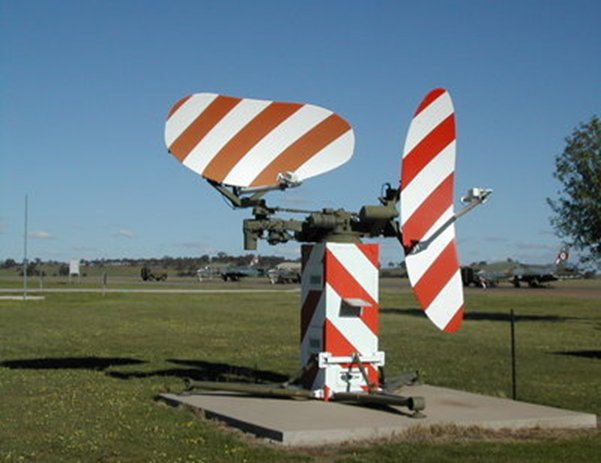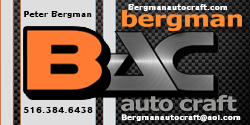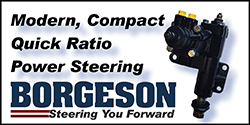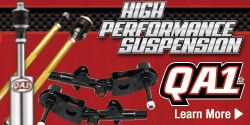Cheaper than paying a shop to not follow your instructions ($140 plus $1 per use). No math and comes with the jig. I've been doing my own alignments since the '90s and while the jig could be better, I don't see any serious accuracy issue that I would care about. No first hand experience and I won't be buying it but could be a huge help to many. Gyraline.com
DIY Alignment made simple, easy and fast: Phone AP Gyraline
- Thread starter MV8
- Start date
-
Map63Vette
Well-Known Member
I just saw the thumbnail for this video at lunch as well, but haven't had a chance to watch it yet. Just went through their website and looked at the instruction manual. Looks interesting, though maybe not a great fit for all wheel styles. Kind of seems like it's aimed at wheels with a noticeable lip for the fixture to butt against, but the software is a neat idea regardless and would probably work with a different fixture as well.
Interesting. I may have to add this to my list of considerations when I get ready to sign my car again
Not everybody uses a smartphone.
They are all hit and miss without wheel runout compensation, set back compensation and projected thrust angle.
Last edited:
It doesn’t use the center cap, it uses the wheel lip.How the heck do you measure something off the center cap?
Then it’s not for those people. Same way that combs weren’t designed for bald people.Not everybody uses a smartphone.


It does seem like a very smart application. Nothing can compete with the three lines that Lee Hunter Introduced into the alignment world.
I still keep my eye out (and I can do that) for an old Hunter A111.It does seem like a very smart application. Nothing can compete with the three lines that Lee Hunter Introduced into the alignment world.
Or a C or D. I had a D for a while. An F, Or an H... Ill keep an eye out for yaI still keep my eye out (and I can do that) for an old Hunter A111.
Yeah most any of the letter string machines are very good.Or a C or D. I had a D for a while. An F, Or an H...
If a guy needs to be a superhero, calibration is a must for those machines along with everything else in this world.Yeah most any of the letter string machines are very good.
Cant change a windshield without calibration.
I know a guy. lolIf a guy needs to be a superhero, calibration is a must for those machines along with everything else in this world.
Cant change a windshield without calibration.
Scamp Rhonda
Well-Known Member
Thanks, I have this app on my phone that can do toe and camber.I just saw the thumbnail for this video at lunch as well, but haven't had a chance to watch it yet. Just went through their website and looked at the instruction manual. Looks interesting, though maybe not a great fit for all wheel styles. Kind of seems like it's aimed at wheels with a noticeable lip for the fixture to butt against, but the software is a neat idea regardless and would probably work with a different fixture as well.
I tried it for camber and it works really well. Just need a straight edge of some sort on the wheel edge and put your phone against it and gives out great digital readings. Just got to figure out a way to keep it all in place without my hands holding it, lol. I found the app on Google Play Store for free. Not perfect but pretty good for free.
Last edited:
Gyraline StudyAnd how do you know a phone is accurate? They were never designed (by some chinesiasian) to be a precision level. How do you CHECK that a phone is accurate?
Checked against commercial equipment (may be Hunter; they don't say).
Modern phones have gyros, accelerometers, lidar add-on, etc. I don't carry a smart phone anymore than I need to for work.
It's like all those online calculators for everything. You can setup the tools and do the math, but it is so much easier and faster. The big question is always trust on any given day, trading privacy and constant monitoring.
Last edited:
It doesn’t use the center cap, it uses the wheely
You didn't watch the video, did you!It doesn’t use the center cap, it uses the wheel lip.
Ya I'm bald. What about it. You didn't watch the video also.Then it’s not for those people. Same way that combs weren’t designed for bald people.


Map63Vette
Well-Known Member
You don't, but you don't know that the machines at the local store are either. I think they try to get around this to some degree with the consistent and constant recalibration they have you do (go back to the same point between each measurement and "recenter"). That does help eliminate some variation, but ultimately won't make a device that can only read in feet suddenly be able to read in inches if that makes any sense. I would tend to think that the sensors in phones nowadays are probably pretty good, and more than likely the same sensors are often used in many more applications than you'd think because it's easier to use a component that already exists than to design your own from the ground up.And how do you know a phone is accurate? They were never designed (by some chinesiasian) to be a precision level. How do you CHECK that a phone is accurate?
All that said I do still kind of agree with you. You are putting a lot of faith into whatever phone you are using, but I guess that's no different than me assuming the spirit level that has been sitting in my garage for years that I took from my parents garage (where it had been sitting for even more years) and have probably dropped more than once is any better.
Yes, I did. And to double check, I just went and rewatched the whole thing and again, they don’t measure ANYTHING off the center cap.You didn't watch the video, did you!
You can check and adjust every single angle on a vehicle alignment with a toe bar, strings and an angle finder. And there's no smart phone to worry about being accurate.
Map63Vette
Well-Known Member
True, but then you have to worry about your angle finder being accurate and the strings being straight. You can adapt for the strings being non parallel, but ultimately you are always relying on a tool and trusting it to some degree.You can check and adjust every single angle on a vehicle alignment with a toe bar, strings and an angle finder. And there's no smart phone to worry about being accurate.
"I" don't worry about it because I know what I'm doing. Soon as I get some stuff done and some things rearranged, I'm gonna do a how to on an at home alignment.True, but then you have to worry about your angle finder being accurate and the strings being straight. You can adapt for the strings being non parallel, but ultimately you are always relying on a tool and trusting it to some degree.
67Dart273
Well-Known Member
No. You can CHECK an angle finder and level. I use an age old Ammco caster / camber gauge, but sometimes I use an angle finder. THE WAY YOU CHECK any level, ANY level, is, you set up a rigid test setup and you turn the level 180. EG if you are testing a simple carpenters level, you put it on a rigid, unmoveable table edge, and mark it, say, with masking tape so you can get it into the same position. You put it down, take a reading carefully, then turn the level 180. The bubble "if off" should travel to the same exact point, EG if it went to the right, one way, it should again go to the right, and to the same reading.True, but then you have to worry about your angle finder being accurate and the strings being straight. You can adapt for the strings being non parallel, but ultimately you are always relying on a tool and trusting it to some degree.
My beater old Ammco has a procedure right in the book to check and calibrate the bubble.
You can do the same on an angle finder, you just have to jig it up such that the test is repeatable.
I first learned how to handle levels in the Navy, working on Ground Controlled Approach (aircraft glide slope) RADAR. The FPN-36 QUAD radars we had were mounted with a pair of Starrett precision machinist's levels at 90* to each other, up on the top of the gearbox. You leveled the radar, and servoed the gearbox all the way around 180 to see if the firs level stayed put, then split the difference if not. You could waste a lot of time in the hot San Diego sun with these, but they HAD to be accurate.

-
















